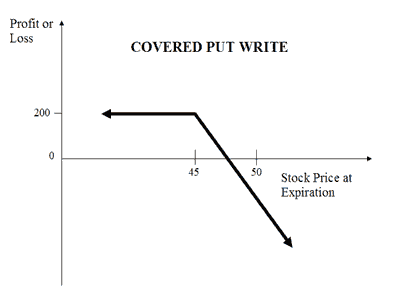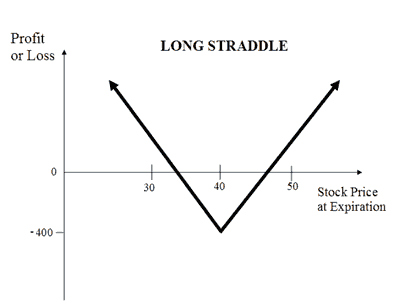 Zerodha (Trading & Demat Account)
Zerodha (Trading & Demat Account)
FREE Equity Delivery and MF
Flat ₹20/trade Intra-day/F&O
 Zerodha (Trading & Demat Account)
Zerodha (Trading & Demat Account)
FREE Equity Delivery and MF
Flat ₹20/trade Intra-day/F&O

|
|
Compare Covered Put (Married Put) and Long Straddle (Buy Straddle) options trading strategies. Find similarities and differences between Covered Put (Married Put) and Long Straddle (Buy Straddle) strategies. Find the best options trading strategy for your trading needs.
| Covered Put (Married Put) | Long Straddle (Buy Straddle) | |
|---|---|---|
 |
 |
|
| About Strategy | The Covered Put is a neutral to bearish market view and expects the price of the underlying to remain range bound or go down. In this strategy, while shorting shares (or futures), you also sell a Put Option (ATM or slight OTM) to cover for any unexpected rise in the price of the shares. This strategy is also known as Married Put strategy or writing covered put strategy. The risk is unlimited while the reward is limited in this strategy. How to use a Protective Call trading strategy? The usual Covered Put looks like as below for State Bank of India (SBI) Shares which are currently traded at Rs 275 (SBI Spot Price): Covered Put Orders - SBI Stock OrdersSBI Strike Price Sell Underlying SharesSell 100 SBI Shares ... Read More | The Long Straddle (or Buy Straddle) is a neutral strategy. This strategy involves simultaneously buying a call and a put option of the same underlying asset, same strike price and same expire date. A Long Straddle strategy is used in case of highly volatile market scenarios wherein you expect a big movement in the price of the underlying but are not sure of the direction. Such scenarios arise when company declare results, budget, war-like situation etc. This is an unlimited profit and limited risk strategy. The profit earns in this strategy is unlimited. Higher volatility results in higher profits. The maximum loss is limited to the net premium paid. The max loss occurs when underlying asset price on expire remains at the strike price. ... Read More |
| Market View | Bearish | Neutral |
| Strategy Level | Advance | Beginners |
| Options Type | Put + Underlying | Call + Put |
| Number of Positions | 2 | 2 |
| Risk Profile | Unlimited | Limited |
| Reward Profile | Limited | Unlimited |
| Breakeven Point | Futures Price + Premium Received | 2 break-even points |
| Covered Put (Married Put) | Long Straddle (Buy Straddle) | |
|---|---|---|
| When to use? | The Covered Put works well when the market is moderately Bearish |
The strategy is perfect to use when there is market volatility expected due to results, elections, budget, policy change, war etc. |
| Market View | Bearish When you are expecting a moderate drop in the price and volatility of the underlying. |
Neutral When you are not sure on the direction the underlying would move but are expecting the rise in its volatility. |
| Action | Sell Underlying Sell OTM Put Option Suppose SBI is trading at 300. You believe that the price will remain range bound or mildly drop. The covered put allows you to benefit from this market view. In this strategy, you sell the underlying and also sell a Put Option of the underlying and receive the premium. You will benefit from drop in prices of SBI, the Put Option will minimize your risks. If there is no change in price then you keep the premium received as profit. |
|
| Breakeven Point | Futures Price + Premium Received The break-even point is achieved when the price of the underlying is equal to the total of the sale price of underlying and premium received. |
2 break-even points A straddle has two break-even points. Lower Breakeven = Strike Price of Put - Net Premium Upper breakeven = Strike Price of Call + Net Premium |
| Covered Put (Married Put) | Long Straddle (Buy Straddle) | |
|---|---|---|
| Risks | Unlimited The Maximum Loss is Unlimited as the price of the underlying can theoretically go up to any extent. Loss = Price of Underlying - Sale Price of Underlying - Premium Received |
Limited The maximum loss for long straddle strategy is limited to the net premium paid. It happens the price of underlying is equal to strike price of options. Maximum Loss = Net Premium Paid |
| Rewards | Limited The maximum profit is limited to the premiums received. The profit happens when the price of the underlying moves above strike price of Short Put. |
Unlimited There is unlimited profit opportunity in this strategy irrespective of the direction of the underlying. Profit occurs when the price of the underlying is greater than strike price of long Put or lesser than strike price of long Call. |
| Maximum Profit Scenario | Underlying goes down and Options exercised |
Max profit is achieved when at one option is exercised. |
| Maximum Loss Scenario | Underlying goes up and Options exercised |
When both options are not exercised. This happens when underlying asset price on expire remains at the strike price. |
| Covered Put (Married Put) | Long Straddle (Buy Straddle) | |
|---|---|---|
| Advantages | Its an income generation strategy in a neutral or Bearish market. Also allows you to benefit from fall in prices, range bound movements or mild increase. |
Earns you unlimited profit in a volatile market while minimizing the loss. |
| Disadvantage | The risks can be huge if the prices increases steeply. |
The price change has to be bigger to make good profits. |
| Simillar Strategies | Bear Put Spread, Bear Call Spread | Long Strangle, Short Straddle |

Add a public comment...

FREE Intraday Trading (Eq, F&O)
Flat ₹20 Per Trade in F&O
|
|